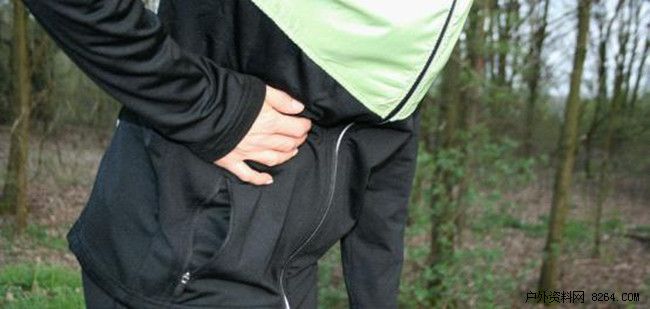Why do some people run out of breath?
Many people have had this kind of experience while running: During the exercise, one part of the body suddenly experiences severe pain. This pain usually occurs in the lower left or right lower abdomen of the chest.

Researchers have given this pain a very academic name, called "motion-induced transient lower abdomen pain" (ETAP). In folks, we often call it "hernia."
What led to hernia?
At present, the cause of hernia is still not clearly defined in the medical community, but several persuasive theories have emerged. The view held by most of the scientists is that the production of radon is related to our diet before exercise.
Some studies have shown that people are most likely to have a hernia during swimming and running. Hernias usually occur on the unilateral lower abdomen and cause athletes to perform poorly, even if you are not an athlete. The experimental results also show that the occurrence of hernia has nothing to do with the athlete's gender and body mass index (BMI). But young people seem to be more susceptible to hernia.
The factors that are most intimately related to hernia are dietary types and eating time before exercise. One research result shows that drinking high-sugar and hyper-osmotic drinks before and during exercise leads to the occurrence of hernia, which is especially true for people who are often troubled by it. How much food you eat before exercise seems to have nothing to do with the occurrence of hernia.
Another complex explanation is this: The repeated stretching of the ligaments between the diaphragm and the viscera (especially the liver) during exercise is the cause of hernia problems. The difference in breathing patterns has caused this problem. When running, people usually change their gas every two or four steps. In general, most people exhale when left pedaling, but a few people exhale when they pedal right. Since the liver is located below the right side of the chest, if you exhale while pedaling right, the diaphragm will move upwards and the liver will fall due to the right pedal. Repeated stretching of the ligaments can cause paralysis of the diaphragm and lead to hernias.
How to do it?
If you run out of breath while running, stop running immediately and put your hand on your right abdomen, rubbing with the frequency of your breathing. During the running or swimming, please try to take a deep breath. The “ligament stretching†theory tends to believe that short breaths increase the chance of hernias. This is due to the fact that the diaphragm only slightly rises and falls during each breath, and the ligaments are always in a state of tension and cannot be relaxed. More likely to happen.
In addition to these, there are some suggestions that can help you stay awake:
Plan your eating time before your workout to make sure that the food has been digested most of the time during exercise—that is, don't exercise right after the meal.
Avoid drinking beverages with high sugar or high osmolarity before or during exercise.
Exercising fully before exercise helps reduce the risk of hernia. You can do this: lift your right hand while stretching as far as possible to the left, hold for 30 seconds, relax, and then change your left hand to stretch right.
Please slow down the movement rhythm until it fades.
You can try to massage the area of ​​hernia, and make the body as far as possible so that the diaphragm can be stretched as much as possible, which helps relieve pain.
Of course, the most important thing is, if you are constantly troubled by this kind of pain, please consult your doctor immediately. If pain persists, seek medical advice. (This article source shell network)
Toner Cartridge For Brother,New Brother Compatible Toner,Tn2225 Black Toner Cartridge,Brand Brother Compatible Toner
jiangmen jinheng office equipment Co. Ltd. , https://www.jhtonercartridge.com